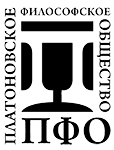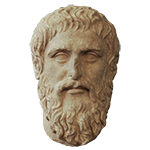НАЗАД К СПИСКУ
КОНФЕРЕНЦИЙ

|
The Universe of Platonic Thought
Универсум платоновской мысли
27th International Conferecne · XXVII
Международная конференция
28 June 2019 St Petersburg, Russia · 28 июня 2019 Санкт-Петербург, Россия
|

|
 |
|
 |
|
Inna Lisovich, The Russian Presidential Academy of National Economy and Public Administration, Deputy Head of the Department of Basic and Additional Educational Programs; Moscow University for the Humanities, Professor, DSc in Cultural studies, CSc in Philosophy
The philosopher on the throne? Representation of the image of the ruler in the European culture of early Modern period
In the Christian tradition the ideal kings were David, Solomon and Christ. In the middle ages they were important for the representation of the ideal monarch as the vicar of God, Christian warrior, judge and healer. They possess not only knowledge and faith, but also wisdom. In early Modern period, the ancient ideal of man and citizen influenced humanism and philosophy, and it also generated controversy about the nature and forms of power. Discourses about the ideal ruler were based on such authoritative texts as Plato's "State", Aristotle's "Politics" and the Bible.
The renaissance fashion for collecting ancient art and curiosities from the new world, humanistic studies and the restoration of lost arts became the enthusiasm not only of humanists, but also of monarchs. The rulers of Europe are no longer limited to patronage; they were keen on new knowledge and want to engage in a new philosophy. The most important role in this process was played by the "State" of Plato. Of course, kings have not abandoned his duty of the Christian warrior, judge and defender. But the question arises – what gave the new philosophy for the throne?
It is possible to distinguish both real rulers and fictional, images of which we can find in art. Emperors Maximilian I, Karl V acquired the glory of patrons of the arts and Rudolf II was nicknamed the German Hermes for the search of the philosopher's stone. Under the patronage of the kings of Europe founded scientific institutions of a new type: king's College (Francis I), Uraniborg (Frederick II), the Royal Society of London (Charles II), and the Academy of Sciences (Louis XIV).
Images of philosophers-rulers both real and fictional appear in art. These are ceremonial portraits of the above-mentioned monarchs and images of rulers in literature. As a rule, the possession of knowledge was considered as a way to increase the power of the monarch (for example, the Duke of Milan Prospero W. Shakespeare). But there are also more complex representations, where knowledge is opposed to military power. For example, in the image of Tamerlan, С. Marlow ignores the facts testifying to the noble origin of the Khan, who was fond of theology, arts and Sciences. In the play "Tamerlane the great" he conquers the East, he is the shepherd-warrior, machiavellist, who despise the rules of honor, has wild power and perfidy.
new philosophy, the early Modern period, the ideal ruler, "The State" Plato, "Politics" of Aristotle, “The Prince” N. Machiavelli, formal portraits of the kings, C. Marlowe, W. Shakespeare
|
|
 |
|
 |
© Платоновское
общество, 2019 г.
НАЗАД К СПИСКУ КОНФЕРЕНЦИЙ
|

















 РУССКАЯ ВЕРСИЯ
РУССКАЯ ВЕРСИЯ